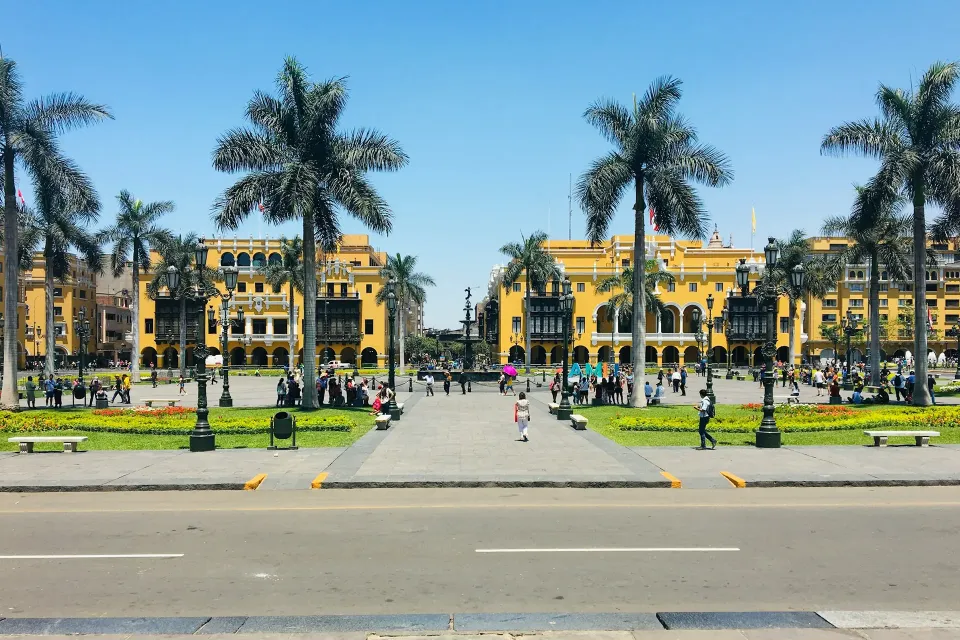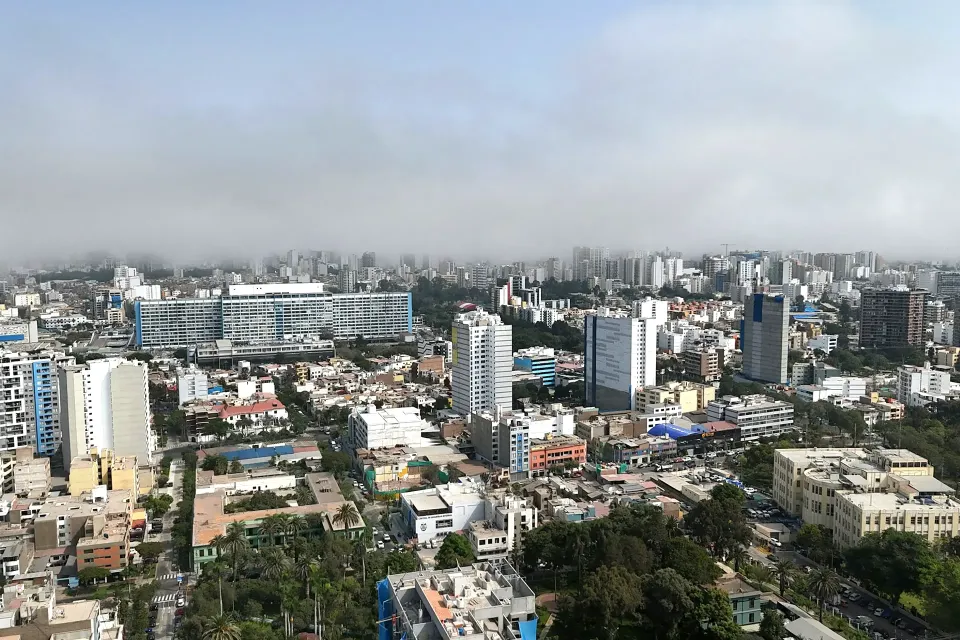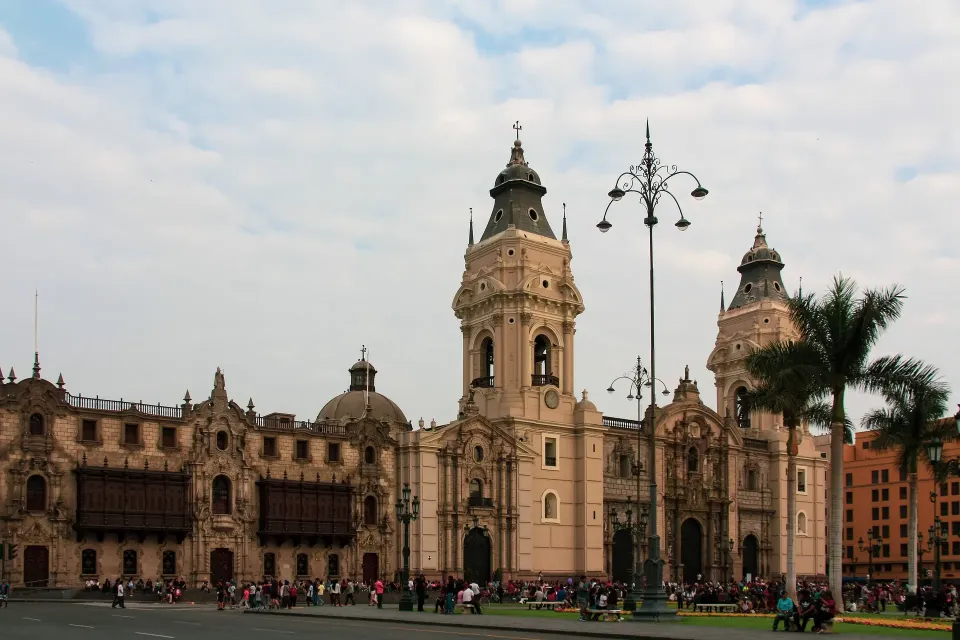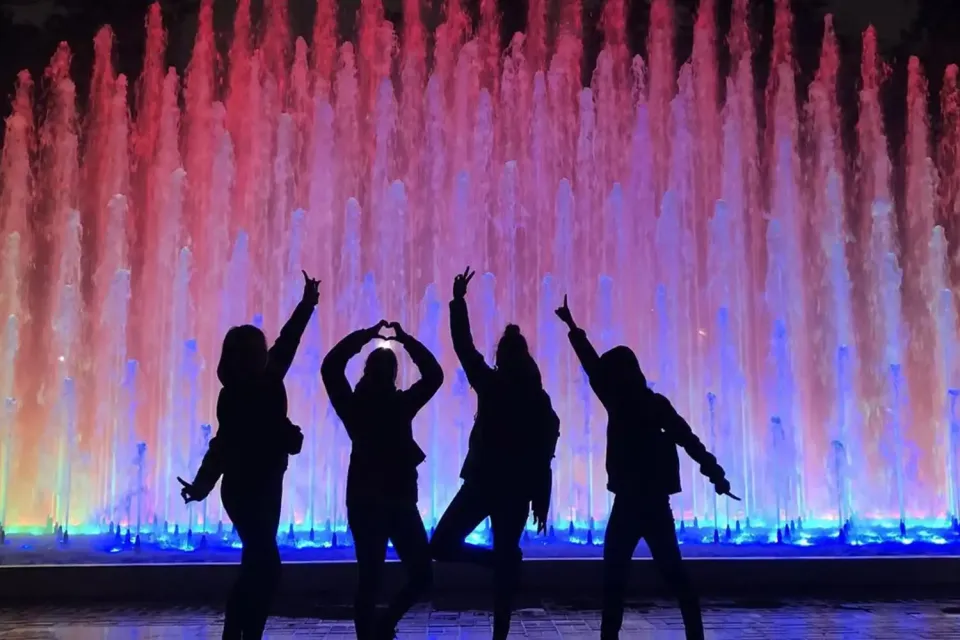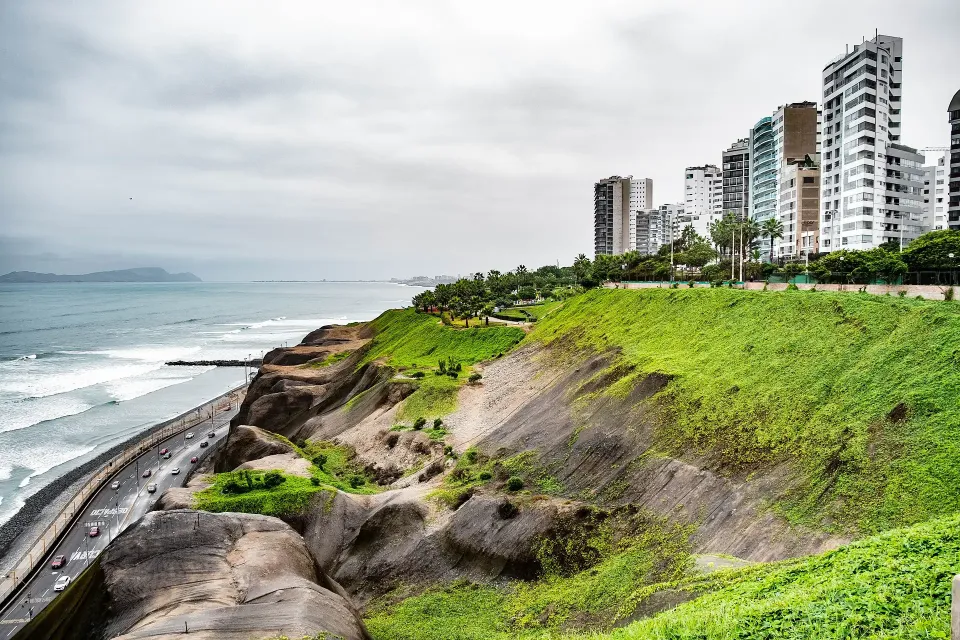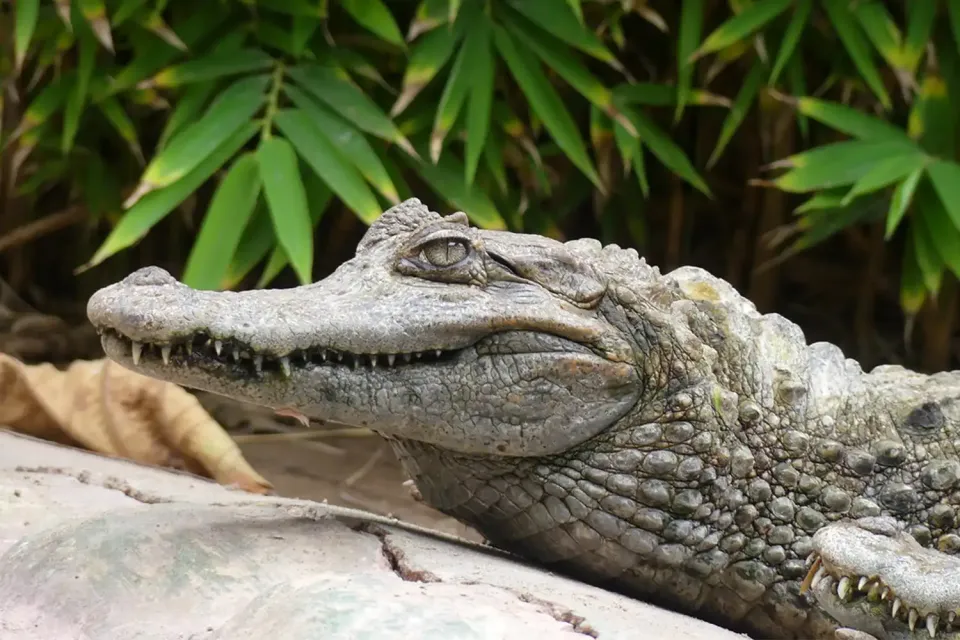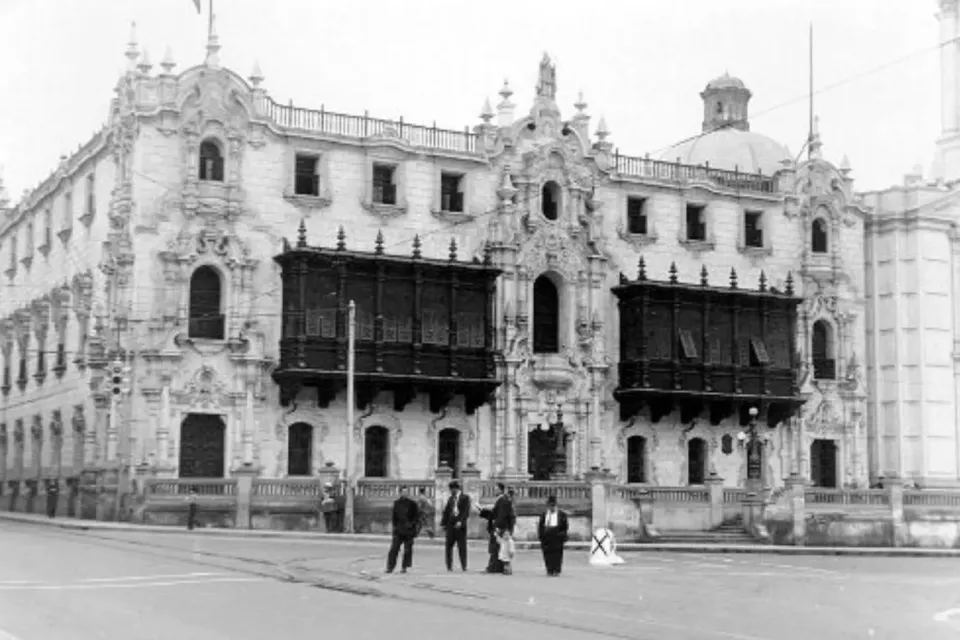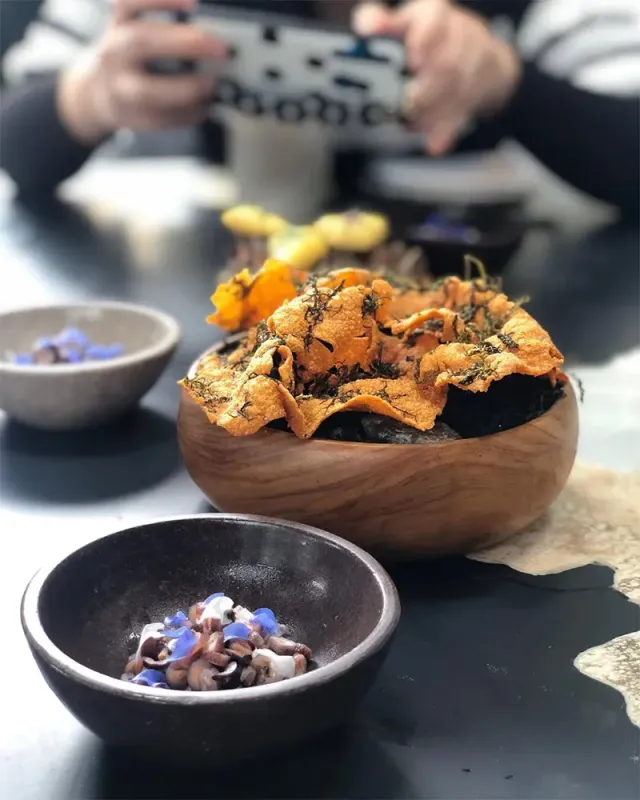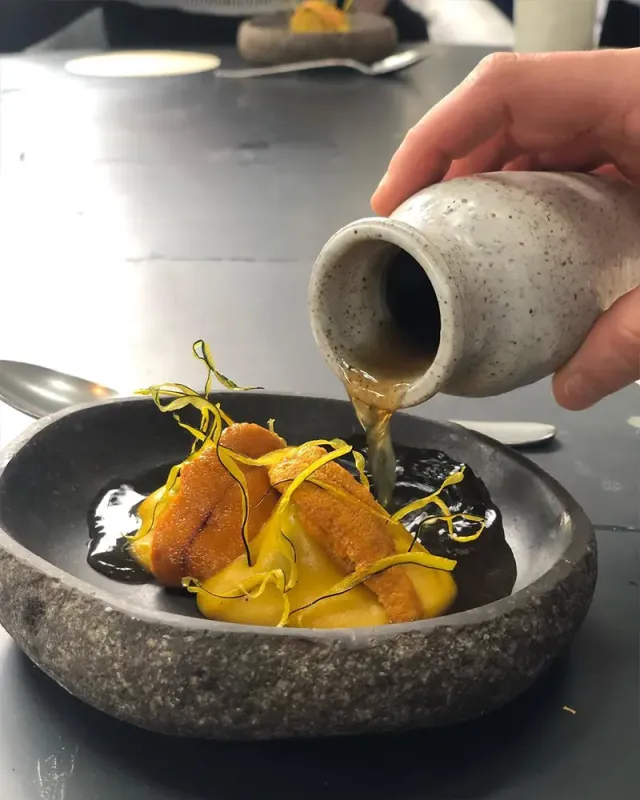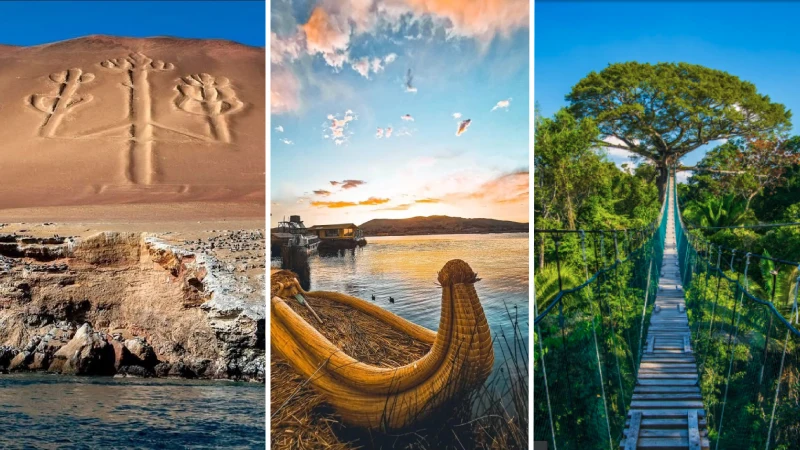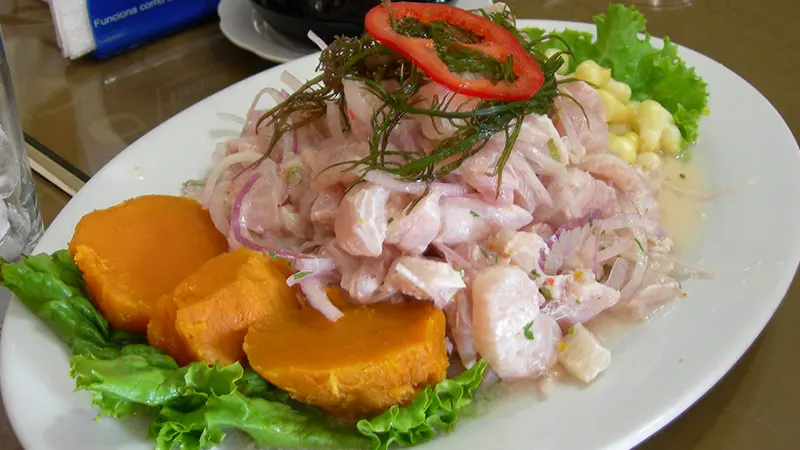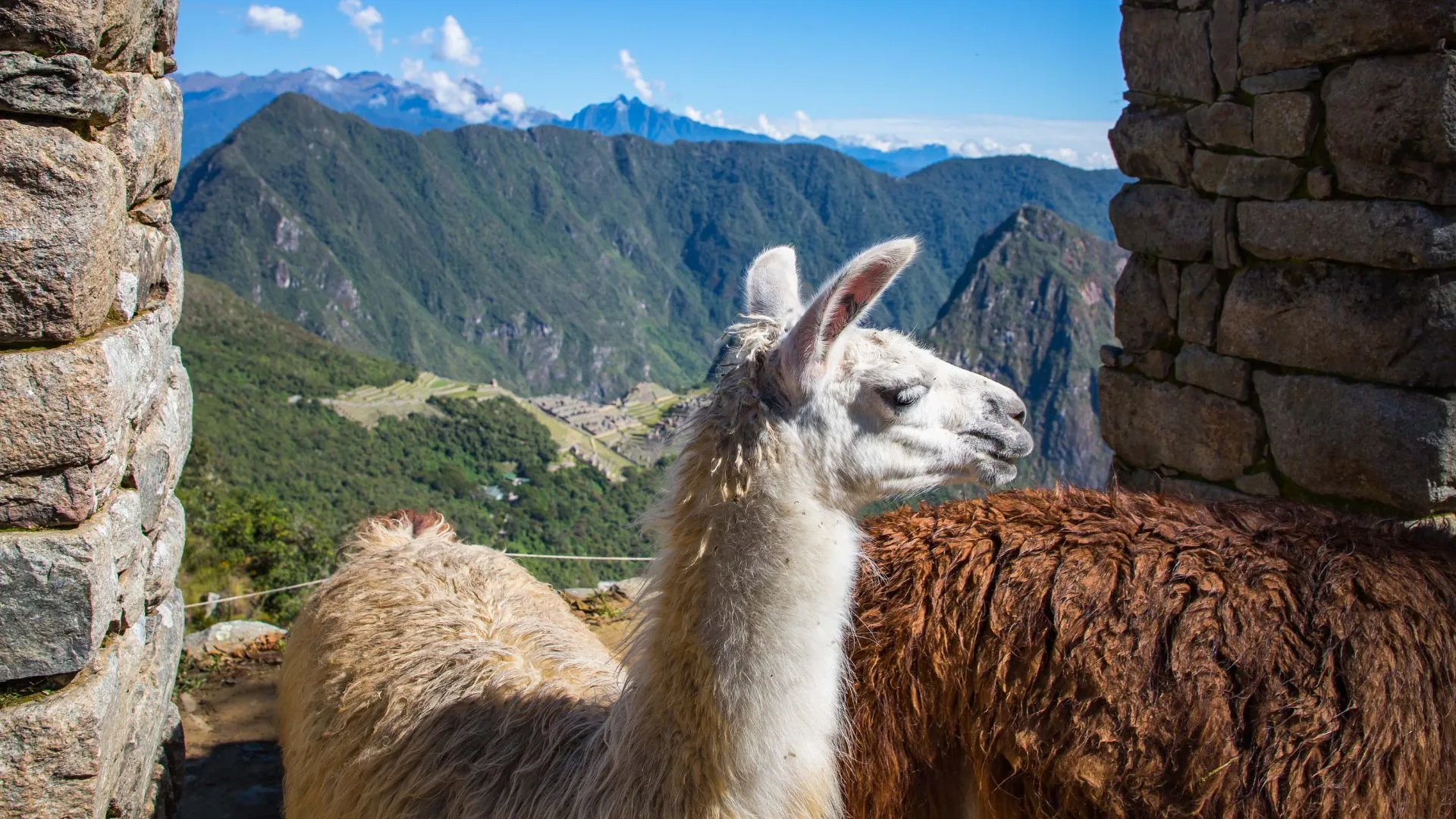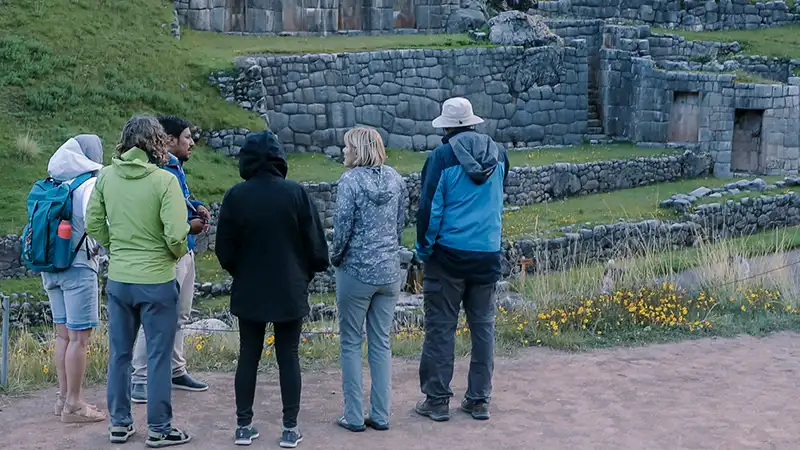Before reaching Machu Picchu, you will have to make a mandatory stop in Lima, where you can explore everything from its world famous gastronomy to its rich history that is displayed as a living museum. So where is the city of Lima?
Lima is the capital city of Peru. People first called it "The City of Kings" when it was founded. Today, it is known as Metropolitan Lima. During the Spanish conquest, Lima was the capital of the Viceroyalty and one of the most important cities in South America. It still holds great historical and cultural importance. You can find a mix of cultures and ethnicities in the city today. Its food and traditions are famous worldwide.
Here is the Meaning: A city that speaks a lot
The name "Lima" has two main origins:
- Quechua Origin
The name comes from "Rimac," which means "to talk".- Aymara Origin
In Aymara, it comes from "Limay," linked to a yellow flower called "Limac-Huayta." This flower was used to encourage children to say their first words. The action of helping them speak is also called "limay," which means "to talk".
Where is Lima Located?
Lima is in the valleys of the Rimac, Chillón, and Lurín rivers. It lies in the middle of the coastal desert, facing the Pacific Ocean. The city’s coordinates are 13°19'16" South latitude and 77°53'02" West longitude. Lima is 101 meters above sea level and about 130 kilometers from the coast.
How to Get to Lima
- By Air: Fly to Jorge Chávez International Airport from any city or country. From the airport, you can take a taxi or bus to the city center.
- By Land: Many bus companies connect Lima to other parts of Peru and neighboring countries like Chile, Ecuador, and Colombia. Major routes include the Panamericana Norte, Panamericana Sur, and Carretera Central highways.
- By Sea: Cruise ships arrive at ports like Callao, Salaverry, Chimbote, and Matarani.
- By Train: A train service connects Lima to Huancayo in the interior of the country.
Weather of Lima
Lima’s climate is mild and varies from humid to cloudy. Daily temperatures can reach up to 31°C and drop to 12°C at night. The city has two main seasons:
- Summer: Lasts from December to March.
- Winter: Lasts from April to November.
What to Visit in Lima Without Missing a Thing
Main Square of Lima
The Main Square, or Plaza Mayor, was created during the Spanish colonial period by Francisco Pizarro. It was a social space with various uses over time:
- In the colonial era, it had a gallows for public executions.
- During the viceroyalty, it served as a market and bullfighting arena.
- In the republican era, a fountain replaced the gallows.
- It witnessed key events, like the proclamation of Peru’s independence. Today, you’ll find neoclassical buildings around the square, including the Government Palace, Cathedral of Lima, Archbishop's Palace, Municipal Palace, Casa de Aliaga, and the House of Peruvian Literature.
Historic Center
Lima’s historic center showcases monumental Spanish architecture. You can visit colonial mansions with baroque designs, such as:
- The Central Reserve Bank Museum of Peru.
- The Church of La Merced.
Archaeological Sites
Lima is rich in archaeological heritage from pre-Hispanic and Inca times.
- Sacred City of Caral: Located in the Supe Valley, Caral is the oldest city in the Americas. It features monumental buildings, 32 public structures, pyramids, plazas, and stepped platforms.
- Puruchuco: An administrative and religious site built by the Ychsma and later used by the Incas. It is located in Ate and includes pyramids with ramps, Inca cemeteries, and an Inca chief’s palace.
- Huaycan de Cieneguilla: Located in Cieneguilla, this administrative center features adobe and stone structures with colorful geometric reliefs.
- Huaycan de Pariachi: Found in Ate, this monumental site has remains from the pre-Ceramic, Ychsma, and Inca periods, including a palace.
- Áspero: A fishing center from 3000–1800 B.C. in Supe. It has temples and huacas such as Huaca Alta and Huaca de los Ídolos.
- Vichama: A fishing and trading center in Végueta, with 22 architectural complexes, ceremonial halls, and sculptures of adults and children. The site’s main deity, Vichama, represented daylight.
Archaeological Sanctuaries
- Pachacamac Sanctuary: One of the most important pre-Hispanic sites on Peru’s coast, located in Lurín. Built by the Lima culture and later taken over by the Incas, it served as a pilgrimage site dedicated to the god Pachacamac. You’ll find temples, plazas, and the Temple of the Sun.
- Garagay Sanctuary: A 3,500-year-old ceremonial site in San Martín de Porres. It features U-shaped temples with high-relief images of deities in the Chavín style.
Huacas (Sacred Sites)
- Huaca Pucllana: Located in Miraflores, this site was built by the Lima culture with adobe bricks. It includes a truncated pyramid, patios, and plazas.
- Huaca Mateo Salado: In central Lima, this site served as an administrative and ceremonial center. It has five truncated pyramids, walls, and plazas.
- Huaca Huallamarca: Found in San Isidro, this stepped pyramid was used as a cemetery by the Lima, Chincha, and Ychsma cultures.
- Huaca Huantille: Located in Magdalena del Mar, this pyramid was built by the Ychsma culture and later occupied by the Incas.
Parks
Lima has many beautiful parks you can explore:
- Parque de la Reserva (with the Magic Water Circuit)
- Parque de la Exposición
- Campo de Marte
- Parque Universitario
- Parque de la Muralla
- Parque Mariscal Castilla
- Bosque del Olivo
- Parque Reducto N.º 2
- Pantanos de Villa (a natural wetland)
- Parque de la Amistad
- Parque Kennedy
Scenic Walks and Beaches
- Tourist Boardwalks: Found in Miraflores and Barranco.
- Beaches: Santa Rosa, Ancón, Punta Hermosa, Punta Negra, San Bartolo, and Pucusana.
- Cerro La Milla: Known as the "Viewpoint of Lima."
Zoos
- Parque de las Leyendas in San Miguel.
- Zoo Huachipa in Ate.
Museums
Lima offers a wide variety of museums, including:
- National Museum of Archaeology, Anthropology, and History of Peru.
- National Museum of Peruvian Culture.
- Rafael Larco Herrera Archaeological Museum.
- Gold Museum of Peru.
- Lima Site Museum.
- Pachacamac Site Museum.
- Lima Museum of Art (MALI).
- Italian Art Museum.
- Natural History Museum.
- Museum of Electricity.
- Postal and Philatelic Museum.
- Other smaller galleries and site museums.
Art Galleries
Check out:
- El Gato Tulipán
- La Kasa Roja
- Jade Rivera World
- Luis Miró Quesada Garland Hall
- Others in Miraflores and Barranco.
Colonial Churches
Visit churches from the 15th to 17th centuries:
- The Basilica Cathedral of Lima.
- San Francisco Convent.
- Santo Domingo Convent.
- The Monastery of the Nazarenas.
- Torre Tagle Palace.
Natural Attractions
- Pantanos de Villa: A wetland in Chorrillos, perfect for birdwatching.
- Lomas de Ancón: A natural area with unique plants in Ancón.
- Lomas de Lima: Includes Carabayllo, Amancaes, and Villa María.
Lima’s Remarkable History
Pre-Lima Era
During the Ice Age, the Lima valley was home to hunters, fishermen, and gatherers.
- Chilca People: These early settlers lived around 4000 B.C. They were the first to practice basic farming. Crops included cotton, chili peppers, squash, corn, and potatoes. They lived along the Peruvian coast.
Lima Era
In the Early Intermediate Period, the Rimac River valley was home to small villages and chiefdoms.
- Lima Culture: This society built structures using small handmade bricks called "adobitos." Their main deity was "Rima-Lima." They constructed monumental buildings for the elite and domestic spaces shaped like horseshoes. Examples include: Playa Grande in Ancón, Media Luna and Cerro Culebra in Chillón, Complexes like Copacabana, La Uva, Santa Rosa, and Pachacamac (the most important ceremonial center).
- Ychsma Chiefdoms: Between 900 and 1450 A.D., autonomous groups lived in the Rimac and Lurín valleys. They formed small kingdoms like Lati (Ate), Sulco (Surco), and Maranga (San Miguel). Their buildings had walls to control access and housed only the elite—priests, leaders, and their families. The common people lived in scattered villages and farmed the land. Their main god was "Rimaq," represented by a round stone. The Santa Ana Temple was built over this stone.
Inca Period
In the Late Intermediate Period, the Incas controlled the area.
- In the 15th century, Pachacutec and his son, Tupac Inca Yupanqui, led armies from Cusco to conquer the coastal chiefdoms. They built administrative centers and temples like Huaycan, Tambo Inca, and Pachacamac.
- In 1536, Manco Inca's army fought the Spanish near Cerro San Cristóbal but lost.
- The Spaniards built Lima's cathedral on the Puma Inti temple, the government palace on Taulichusco’s palace, and other buildings on Inca structures.
Colonial Lima
In 1535, King Charles I of Spain ordered the founding of cities in the New World.
- Founding of Lima: Francisco Pizarro established the city on January 18, 1535, calling it "The City of Kings."
- City Layout: Spanish architect Diego de Agüero designed a grid plan with 117 blocks, 13 blocks long and 9 blocks wide. Each block was divided into four plots given to Spanish conquerors. The streets followed a strict rectangular grid.
- Architecture: Most houses had two floors with stone entrances and carved wooden balconies in a Renaissance style with Moorish touches.
Where to stay and where to eat?
Hotels
Some of Lima’s top hotels include:
- Sheraton Lima Historic Center in Pasaje de la República.
- J&A Classic Hotel in Miraflores.
- Sonesta Hotel El Olivar in San Isidro.
- Iberostar Selection Miraflores.
- Hyatt Centric San Isidro Lima.
- Pullman Lima Miraflores.
Restaurants
Try some of Lima’s most famous eateries:
- Central in Barranco.
- Gaijin in San Isidro.
- Huambra in Miraflores.
- Awicha in Barranco.
- Panchita in Miraflores.
- Mayta in Miraflores.
- Maido in Miraflores.
Peruvian Food you should try
Don’t miss these Traditionals Peruvian foods:
- Causa Limeña
- Ceviche
- Arroz con Pollo
- Anticuchos
- Pisco Sour
- Roasted Chicken (Pollo a la brasa)
Festivals and Events that could Interest You
- Anniversary of Lima: Celebrated every January 18.
- Harvest Festival: Held in Surco from May 30 to June 2.
- National Holidays: Celebrated on July 28 with parades and ceremonies.
- National Horse Competition: Held in Lurín every April for seven days.
- Day of the Creole Song: Celebrated every October 31.
- National Pisco Sour Day: Celebrated on the first Saturday of February.
- Procession of the Lord of Miracles: A religious event held on October 18, 19, and 28.
- Feast of Santa Rosa de Lima: Celebrated every August 30.

